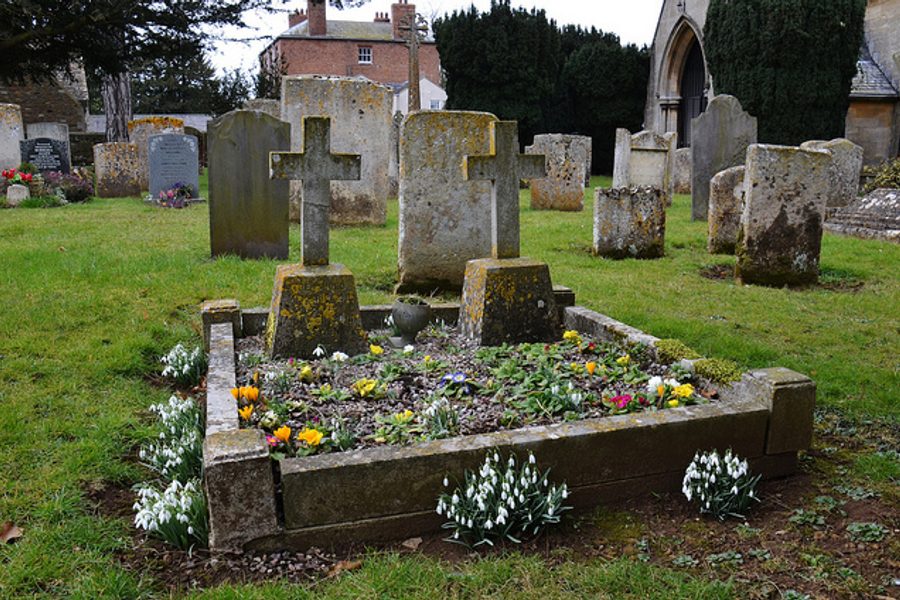
For three years in the early 1970s, journalist Studs Terkel gathered stories from a variety of American workers. He then compiled them into Working, an oral-history collection that went on to become a classic. Four decades after its publication,Working is more relevant than ever. Terkel, who regularly contributed to In These Times, once wrote, “I know the good fight — the fight for democracy, for civil rights, for the rights of workers — has a future, for these values will live on in the pages of In These Times.” In honor of that sentiment and of Working’s 40th anniversary, ITT writers have invited a broad range of American workers to describe what they do, in their own words. More “Working at 40” stories can be found here.
Elmer Ruiz spoke to Terkel about the difficulty of his work as a gravedigger, exacerbated by the mathematics as well as the art of presentation involved, especially in the winter when the earth is as hard a cement. “Not anybody can be a gravedigger,” he said. “You have to make a neat job.”
Ron, the sole gravedigger at a large cemetery in Chicago, told In These Times a similar story: “If I’m at home and I think of something I did earlier in the day and now that I’m thinking about it a little bit more, I think ‘Oh, maybe I could have done this a little different.’”
I used to work at a paintball shop. One of my customers used to be the cremator here, and he told me they were looking for people. I needed a better job so I came in and applied, and the superintendent gave me a chance. It’s working on 10 years now.
I bury people, bury cremated remains, set headstones — basically uphold the integrity of the cemetery, enforcing the rules and regulations.
A lot of people don’t like to hear that they’re doing something wrong, but if they are, you’ve got to tell them they can’t do that: Stone rubbings, bicycling inside the cemetery, jogging, tripod photography, novelty photography. We don’t allow people to dress up out here like it’s Halloween and use this place as a backdrop for photos. When you get people coming in here dressed up as nuns with crazy makeup on their faces and skeleton costumes, you kind of go, “I’m sorry, we just don’t allow this in here.” It’s disrespectful. And it’s been the rules and regulations for as long as I’ve been here. You’ve got to uphold some type of integrity.
“Do you ever see any ghosts?” I get asked that all the time. “Is it really true you’re burying people six feet deep?” But there’s no ghosts. And, no, we go roughly four-and-a-half to five feet deep.
For a burial, you’ve got to find the grave, make sure you’re in the right spot. Then we have what’s called a poker. You stick that in the ground, make sure the grave is open. If there are vault boxes around it — those are the cement boxes the caskets go inside of — you’ve got to find the one edge and measure, make sure you’ve got three feet of room. A grave is three by eight feet. All graves, unless it’s a child, are three by eight. Children’s graves are usually three by five. And then you’ve got the ash graves, which are roughly a one-by-one square, depending on the size of the urn.
So we strip the sod, throw out the black dirt, throw out what’s called the head end, or the top of the grave where the headstone will go. We get the scoop of the backhoe in there, take out as many scoops as we need. Then we throw out the foot end, where the bottom of the grave will go; get that all nice and level, make sure our walls are square all the way down, make sure the ground inside the grave is level. Then we come in with our box-setter, which sets the vault box. Then we put our greens out, which are basically pieces of astroturf which cover up dirt and make the grave look all pretty. Then we put our lowering device on.
When the funeral arrives, we bring the casket up, or the pall bearers do, and we put it on the lowering the device. The family or the priest or whoever would say whatever it is they say, and then we lower it. We get rid of our equipment, take away our lowering device and we take away the greens. Then we come in with our box-setter again and we put the lid on. And then we commence the backhoeing. You open and close it with a shovel. The rest is done with a backhoe. It’s pretty time-consuming. A lot of work.
My predecessor was here for forty-four years. He was fantastic. He was the greatest guy in the world. He’d make you cry you’d be laughing so hard, you know. Knew this place like the back of his hand. Now I’m the only gravedigger that’s out here.
What’s a bad day for me? Two burials in one day. That’s very bad because it’s so time-consuming that you’ve got to hurry up to make sure that you’re ready for the next one. The equipment is not light — if it was, it wouldn’t be a problem. But the equipment is heavy, it’s time-consuming. And you have to make sure that you’re dead-on accurate because one little mishap can throw off the whole deal, and then you have to start the whole deal all over again.
Graves caving in while you’re digging them is a bad day. Because what would normally be a two- or three-hour job turns into an eight- or ten-hour job because you’ve just got nothing but caving. And by the time all is said and done, you could park this truck in the hole. [Points to a large pick-up truck parked near the equipment shed.] It’s the truth.
The summer of 2007, a microburst, almost like a tornado, ripped through Chicago and ripped through this place — knocked out about 110 trees and shut the cemetery down for about six to eight weeks. But we still had to bury people. We had to make sure that if we had a burial, the roads were clear of trees. That was bad. You’re talking 100-year old trees falling like toothpicks. And that made for a bad couple of months.
I get the weekends off, provided there’s no burials on Saturdays. Which, I have a burial this Saturday. And then I get vacation, I get personal days. Every now and again you need a little break, you get burnt out.
There’s a union. I’m part of the laborers union, SEIU Local 1. They just negotiated my contract, so I’ll see those guys in about two years. But I’ll have conversations with my rep every now and again, maybe a phone call here and there. But other than that, it’s pretty good. Things could always be better and things could always be worse.
The worst burials are the children. I’ve had to bury a few kids, and those are the worst ones because they didn’t have a chance in life, you know? But when you’ve got someone up in their eighties, you know they’ve lived a long life. Let them rest.
But it’s a job. You’re providing a service for families and you do the best that you possibly can and hopefully get a thank you out of it. I talk to some of the families. They crack jokes during the service because that’s just the way that the family is. They’re appreciative of what you do and what you’re providing them. Nine times out of ten I get a thank you, and that’s all I look for.
You’ve got a job you’ve got to do. You can’t go “Aw, man, I can’t do this.” You’ve got to maintain a certain respect for these people. You just stand off in the background, and when the funeral director says “Hey, come on,” that’s when we go. If the family sticks around, that’s great. If not, that’s great. They’ve got their choice of whether or not they want to witness everything for their own closure.
Do you feel like you’re part of the process of closure?
Me personally? No I’m just providing a service, I’m burying a loved one. The family doesn’t necessarily recognize what I do. They just figure you’re a guy here, you’re going to put whoever in the ground. And they’re going to say their final good-byes and they’re going to walk away. So I’m not part of any closure, I’m just there kind of taking up space until they’re ready. But I’ll tell you, gravediggers are the last people to ever let you down. Keep that in mind. When you catch that joke… [Laughs.]
Do you think you’ll change jobs again?
I hope not. I’ve been here for ten years, man. I’m 40 years old. I don’t want to be out there at 45 looking for another job.
The economy sucks. And jobs suck. I’ve got bills I’ve got to pay. I don’t want to be out looking for another job, going to all these interviews, worrying about if I look okay or if I’ve spoken correctly or if they see one of the tattoos I have. So no, I don’t want to look for another job. I want to retire doing this.







